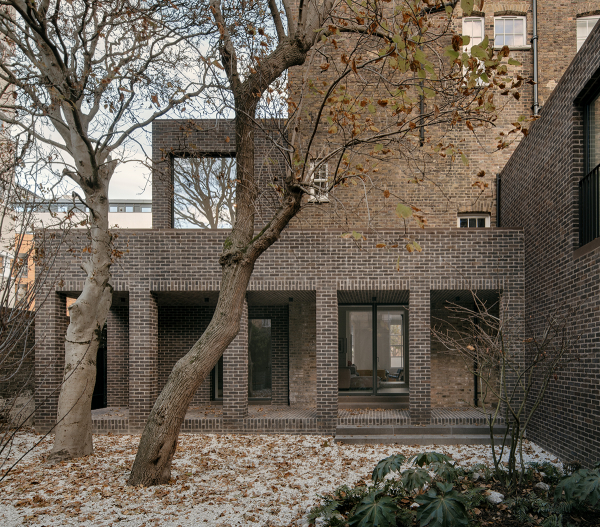Erbar Mattes Architects has skilfully remodelled a former pub in north London to create a home for an expanding family.
Photos
Ståle Eriksen, Simon Menges
The Blockmakers Arms is a Grade II listed former public house situated on Shepherdess Walk in north London. Forming the end of a terrace of three-storey townhouses, the 19th-century building was subdivided into three independent flats in the 1970s, with an external stair added to the rear to connect the upper floors. Prompted by the needs of an expanding family, the owners of the ground floor flat acquired the vacant first floor, before approaching Erbar Mattes Architects to enlarge their property into a five-bedroom duplex.
One of the main challenges was to retain separate access to the independent apartment on the top floor, explains the architect. The solution was to relocate the external circulation to the side elevation and add a raised walkway to the rear. This creates a new visual and physical connection to the courtyard, as well as a unique arrival experience for the apartment. A rear brick loggia draws inspiration from monastic architecture, where cloisters form a sheltered transition between inside and outside spaces.
Ground, first and second-floor plans; section
The scheme retains most of the original fabric, with demolition mostly limited to incongruous extensions that detracted from the legibility of the original building. Constructed from handmade grey-brown bricks and matching coping stones to complement the existing masonry, the new rectilinear building volumes wrap around the side and rear elevations without distracting from the ornate front façade.
Inside, the former function room with its high ceilings, original timber panelling and fireplaces has been restored and re-purposed to create a generous master bedroom with access to a roof terrace.
The first-floor kitchen has been transformed into a large family bathroom, and a wider section of the corridor converted into a study. Modern plasterboard ceilings have been removed to reveal the original ceiling heights. Redundant spaces have been fitted with inbuilt joinery, helping to declutter the house and create clearly defined rooms.
A new internal staircase with a large window, together with additional bedrooms and bathrooms, are located in the new side and rear volumes. During the course of the works, the architects received a further commissioned to convert the interiors of the self-contained second floor apartment.
All modern interior elements were removed, while the original partitions, ceilings, doors, and fireplaces were all retained. The kitchen now faces the front, and new partitions have been added to form a generous two-bedroom dwelling.
The project employs low-energy design as far as is reasonably possible within the constraints of the listed fabric. High levels of thermal insulation and airtightness are provided in the new-build elements. Biodiverse green roofs on the extensions help to regulate internal temperature. Window sizes and openings are optimised to maximise daylighting and minimise overheating.
Energy-efficient, double-glazed, composite, low-e coated windows were specified for the new-build elements. The lighting concept avoids excessive and unnecessary numbers of fittings in favour of a room-by-room approach with supplementary floor and table lamps.
Additional Images
Source: Architecture Today










